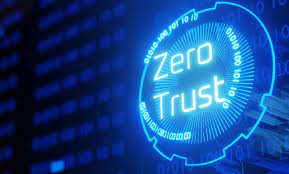In an era marked by digital transformation and increasingly sophisticated cyber threats, traditional security models are no longer sufficient. The Zero Trust Security model is emerging as a revolutionary approach to cyber defense, fundamentally reshaping how organizations protect their networks, data, and identities. This blog will explore the core principles of the Zero Trust model, its key components, and the myriad benefits it offers for network security and data protection.
The Shift from Perimeter Security to Zero Trust
Traditionally, cybersecurity strategies relied heavily on perimeter defenses, which assume that threats primarily originate from outside the organization. Firewalls and intrusion detection systems were designed to protect the internal network from external threats while assuming that everything inside the network was safe. However, this approach has proven inadequate as cybercriminals increasingly exploit vulnerabilities within organizations.
The Zero Trust model challenges this outdated paradigm. Its fundamental principle is simple yet powerful: “never trust, always verify.” Under this model, organizations treat every access request—whether from an internal or external source—as potentially malicious. This necessitates robust identity verification, strict access control, and a commitment to continuous monitoring.

Key Principles of Zero Trust Security
1. Identity Verification
One of the cornerstones of the Zero Trust Security model is the emphasis on identity verification. This process ensures that anyone attempting to access the network is who they claim to be. Modern organizations implement multi-factor authentication (MFA) as a standard practice. MFA requires users to provide multiple forms of identification, such as a password, a fingerprint, or a one-time code sent to their mobile device. This significantly reduces the risk of unauthorized access, even if credentials are compromised.
2. Least Privilege Access
The principle of least privilege access is another critical aspect of Zero Trust. This principle dictates that users should only have access to the information and resources necessary for their specific roles. By limiting access rights, organizations can minimize the potential damage caused by compromised accounts or insider threats. Implementing role-based access control (RBAC) can help enforce this principle, ensuring that users can only interact with the data they need to perform their job functions.
3. Continuous Monitoring
Continuous monitoring is vital for maintaining a robust security posture in a Zero Trust environment. Organizations must constantly assess user activity, network traffic, and system vulnerabilities. This real-time surveillance allows security teams to identify anomalies and respond to potential threats before they escalate. Advanced analytics and machine learning can enhance monitoring capabilities, helping organizations detect patterns indicative of malicious behavior.
4. Micro-Segmentation
Micro-segmentation involves dividing the network into smaller, isolated segments to limit lateral movement by attackers. In a traditional network, once a hacker gains access, they can often move freely between systems. Micro-segmentation restricts access to sensitive data and systems, making it more challenging for attackers to escalate their privileges and access critical resources. By creating secure zones within the network, organizations can better protect their assets and contain potential breaches.
5. Endpoint Security
In today’s remote work environment, ensuring endpoint protection is paramount. Each device that connects to the network must be secured to prevent vulnerabilities from being exploited. This involves deploying security software on all endpoints, such as laptops, smartphones, and IoT devices, and regularly updating these systems to patch vulnerabilities. Furthermore, organizations should establish clear policies regarding the use of personal devices (BYOD), ensuring that all endpoints adhere to security standards.
The Benefits of Adopting Zero Trust
1. Enhanced Data Protection
Implementing a Zero Trust model significantly enhances data protection. By ensuring that only authenticated and authorized users can access sensitive information, organizations can safeguard their data against unauthorized access and breaches. Additionally, the emphasis on continuous monitoring allows for the swift detection of potential threats, further strengthening data security.
2. Improved Cyber Resilience
Organizations adopting Zero Trust are better equipped to withstand cyberattacks. The model’s proactive approach to threat prevention and continuous monitoring ensures that vulnerabilities are identified and addressed before they can be exploited. This increased cyber resilience allows organizations to maintain operations even in the face of potential security incidents.
3. Compliance with Regulatory Standards
As regulatory standards surrounding data protection and privacy become more stringent, organizations must adapt their security practices to maintain compliance. The Zero Trust model aligns well with these requirements by enforcing strict access controls and ensuring robust monitoring of user activities. By adopting Zero Trust principles, organizations can better demonstrate their commitment to data privacy and security, thereby reducing the risk of costly penalties for non-compliance.
4. Flexibility in Cloud Security
With the widespread adoption of cloud services, ensuring cloud security has become a top priority for organizations. The Zero Trust model is inherently designed to secure cloud environments by treating all access requests as potential threats, regardless of the source. This flexibility allows organizations to extend Zero Trust principles to their cloud applications and services, creating a unified security posture across on-premises and cloud infrastructures.
5. Mitigation of Insider Threats
Insider threats pose a significant risk to organizations, as employees often have access to sensitive information. The Zero Trust model mitigates this risk by enforcing strict access controls and continuously monitoring user behavior. By implementing robust identity verification and access policies, organizations can reduce the likelihood of insider threats and detect suspicious activity more effectively.
Challenges in Implementing Zero Trust
While the Zero Trust Security model offers numerous benefits, organizations may face challenges during implementation. Transitioning from traditional security models to Zero Trust requires a comprehensive assessment of existing infrastructure, processes, and policies.
1. Cultural Shift
Adopting Zero Trust necessitates a cultural shift within the organization. Employees must understand and embrace the importance of security and their role in maintaining it. Training and awareness programs are essential to educate staff about Zero Trust principles and practices.
2. Integration with Existing Systems
Integrating Zero Trust principles into existing systems and workflows can be complex. Organizations may need to invest in new technologies, such as identity management solutions and advanced monitoring tools, to effectively implement Zero Trust strategies. Ensuring compatibility with legacy systems is also a critical consideration.
3. Resource Allocation
Implementing a Zero Trust model requires adequate resources, including personnel, budget, and technology. Organizations must be prepared to allocate the necessary resources to support the ongoing monitoring, management, and maintenance of their Zero Trust infrastructure.

Conclusion
The Zero Trust Security model is revolutionizing cyber defense by shifting the focus from traditional perimeter-based security to a comprehensive approach that treats every access request as a potential threat. By prioritizing identity verification, continuous monitoring, and access control, organizations can significantly enhance their security posture and better protect their assets against an evolving threat landscape.
As we continue to navigate the complexities of the digital world, adopting a Zero Trust framework is not just a strategic choice; it’s an essential evolution in our approach to cyber resilience. This model empowers organizations to safeguard their data, maintain compliance, and ensure robust protection in an age where threats are constantly on the rise. In a world where cyber threats are pervasive, embracing Zero Trust is no longer an option but a necessity for organizations seeking to thrive in the digital era.
By recognizing that trust must be earned and verified, organizations can build a more secure environment that supports innovation and growth while minimizing the risk of security breaches. Ultimately, Zero Trust is not just a security model—it’s a fundamental shift in how we think about and approach cybersecurity in a rapidly changing world.



